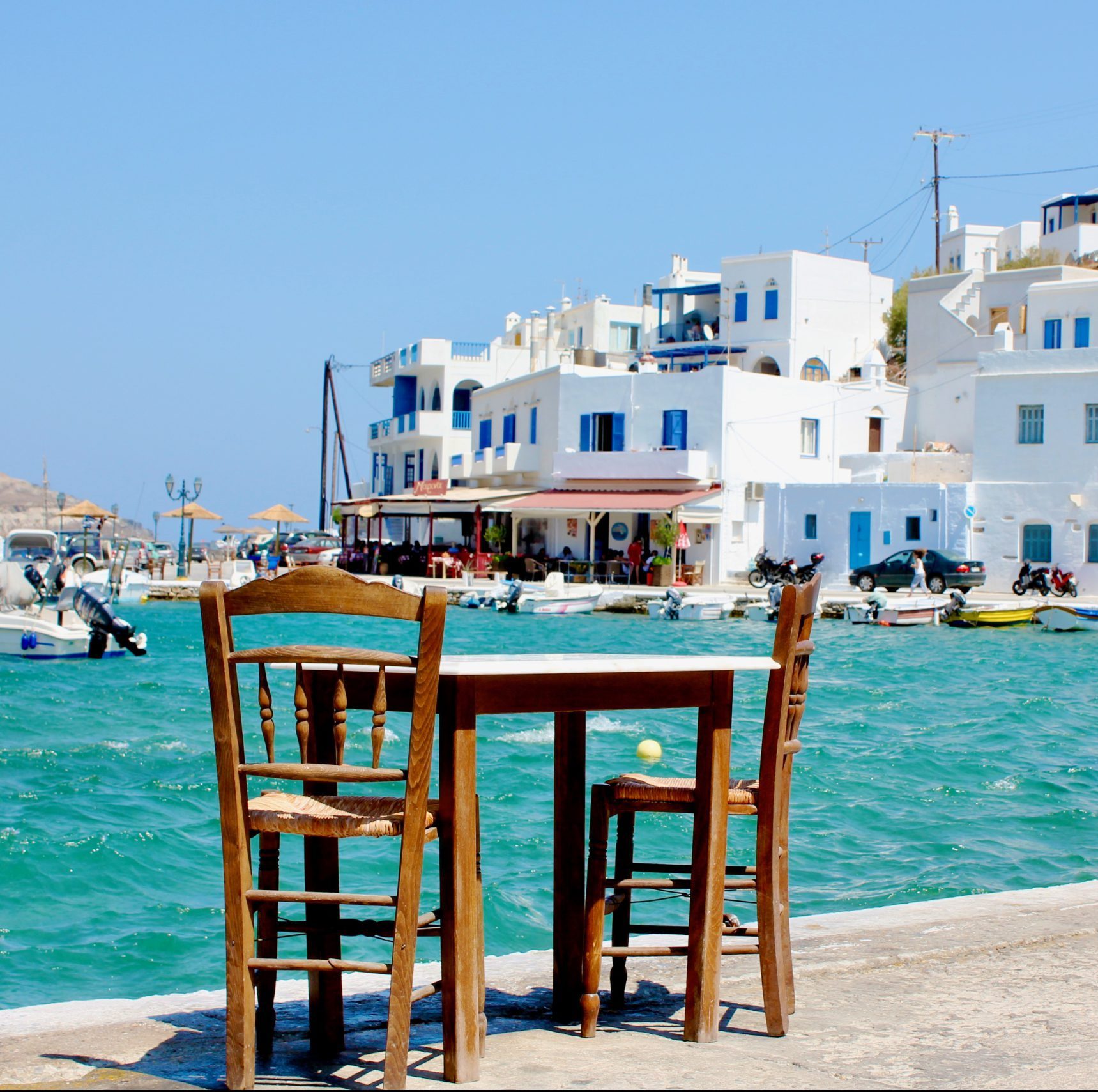Meet Tinos
Tinos is one of the most beautiful islands of the Aegean, with a unique combined charm of traditional and modern culture.
Tinos
Tinos has 62 wonderful mountain and coastal villages and many trails that exceed 150 kilometers in a hiking network that offer you a unique Cycladic experience. It is also famous for its unique beaches, Cycladic alleys and its wonderful products. More specifically, it has a multitude of beaches for all tastes, organized or unorganized, accessible by car and others only by boat.

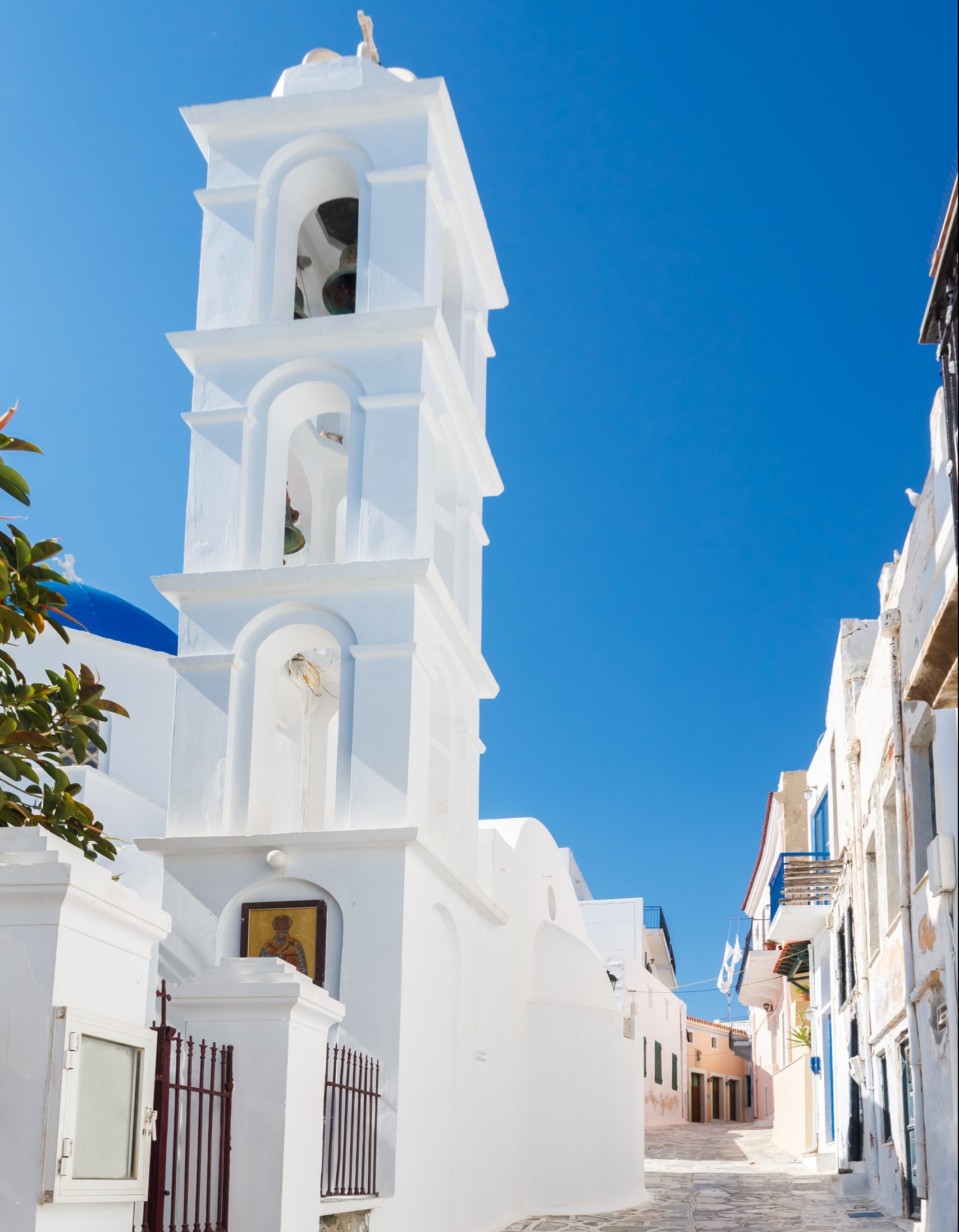
Furthermore, the island has rich agricultural and livestock production. It produces barley, oats and wheat while vines, olives, capers, artichokes, lemon trees, figs and orange trees are cultivated. It is worth trying Tinian cheeses, lousa, sausage and the traditional furtalia.
10 most famous beaches of Tinos
- Kolibithra
- Pachia Ammos
- Agios Romanos
- Ormos Kardianis
- Ormos Isternion
- Kalivia
- Agios Ioannis
- Kionia
- Livada
- Lichnaftia
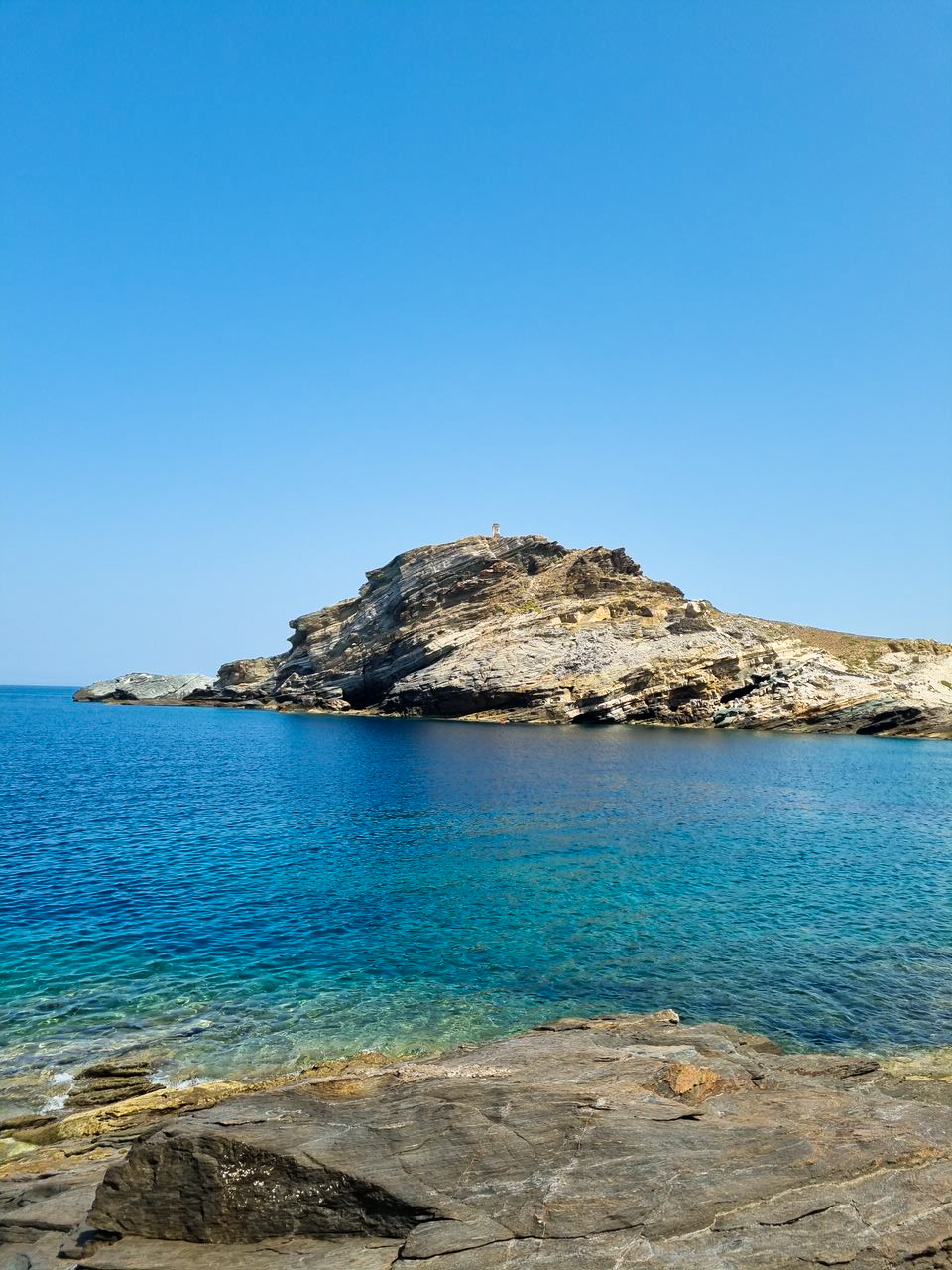
Activities in Tinos
The island has 62 wonderful mountain and coastal villages and many trails that exceed 150 kilometers in a hiking network that offer you a unique Cycladic experience. It is also famous for its unique beaches, Cycladic alleys and its wonderful products. More specifically, it has a multitude of beaches for all tastes, organized or unorganized, accessible by car and others only by boat.
Come to Tinos to live a unique experience that will be unforgettable! If you are a nature lover, Tinos offers the possibility for hiking and tours. You can explore the picturesque villages with their traditional cobbled streets, discover hidden archaeological sites and enjoy the panoramic view from the hills of the island. Be sure to visit the monastery of Kehropotamos, which is surrounded by stunning natural beauty.
For water sports enthusiasts, Tinos offers excellent opportunities for diving, fishing and underwater tourism. The crystal clear blue beaches invite you to enjoy the sun and the sea, while you can also engage in water sports such as kayaking and kitesurfing.
Villages of Tinos
Pyrgos Tinou
Pyrgos is the largest village of Tinos, and one of
the most picturesque spots of the Cyclades. Wander through
picturesque cobblestones and the unique marble-paved one
square, with the characteristic plane tree.
Dio Choria Tinou
Dio Choria (Two Villages) is a village located in the southern part of the island at an altitude of approximately 430 meters, offering a unique view of Tinos and the surrounding islands. They are distinguished by its position apart from the nearby islands of Mykonos, Delos and Rhenia and the more distant ones such as Naxos, Kythnos, Serifos and Paros,
Volakas – Volax of Tinos
Medieval Catholic village built at an altitude of 284 meters, on a small plateau in the middle of Tinos, surrounded by stones and large spherical granite rocks of volcanic origin. It has always been, and still is, the basket weaving village from which it lives.
Kardiani Tinou
Kardiani is a mountain village of Tinos and is located 3.5 km before Ysternia, on a steep slope, above the bay of the same name where the Kardiani beach or “Giannaki beach” is located. It has impressive architecture as most of the buildings in the village are made of marble. The five-story marble spire of the Catholic Church of Panagia Kiouras, the birthplace of the Virgin Mary, is characteristic. From this village came Agia Pelagia who envisioned the finding of the Holy Icon of Megalochari of Tinos.
Hysternia Tinou
Hysternia developed in the past mainly thanks to shipping and marble work. They were the second most important center of marble work in Tinos after Panormos, highlighting some of the greatest Greek sculptors such as Georgios Vitalis, Lazaros Phytalis, Lazaros Sochos, Antonios Sochos, Nikolaos Sochos and Hieronymos Kotsonis Archbishop of Athens and all Greece.
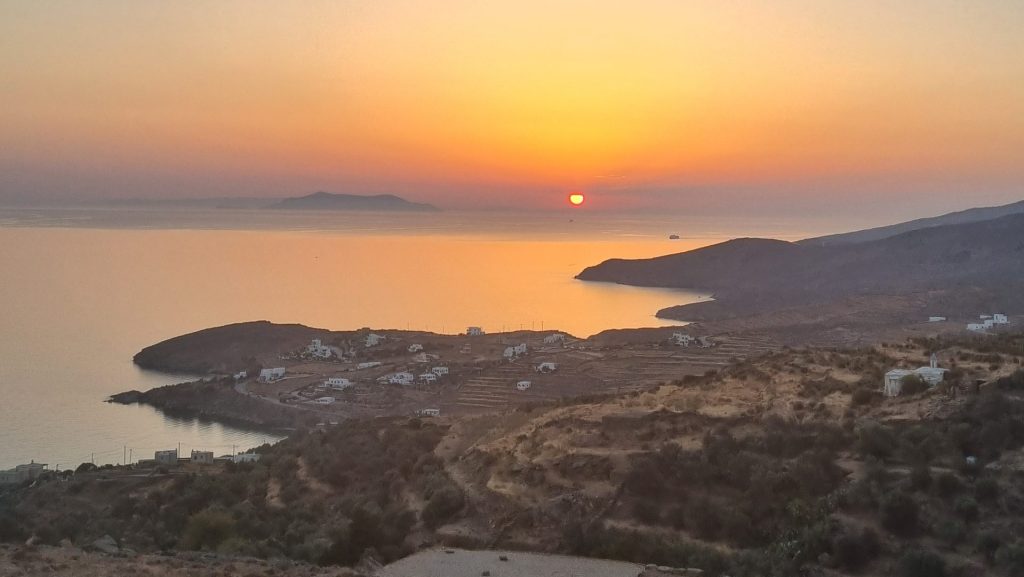


Churches and Pilgrimages in Tinos
Tinos is an island with a great religious tradition, numbering more than a thousand churches, scattered like satellites around the temple of Megalochari. They are parish, private or communal, Orthodox and Catholic, monastic or even “stray”, that is, the traces of those who built them have been lost, but they were “adopted” by residents of the area where they are located. The thousand churches are located on hilltops, in ravines, plains and ravines, in olive groves, groves of trees, on steep coasts and even on calm shores, in an area of 195 square kilometers. The equivalent for the island of Panagia is approximately one church per nine inhabitants!
- Holy Church of Evangelistria Tinos (Panagia): In the city of Tinos, the Holy Church of Evangelistria, or Panagia Tinos, is one of the most important religious centers of Orthodoxy worldwide and the most frequent pilgrimage destination in Greece. It is known for its architectural beauty and is a pilgrimage for many believers.
- Agia Marina: The church of Agia Marina is dedicated to the patron saint of sailors.
- Agios Dimitrios: The church of Agios Dimitrios is located in the village of Pyrgos and is one of the oldest churches on the island, with unique architecture and historical value.
- Monastery of Agia Pelagia: The Monastery of Kehrovouuni is about 500 meters from Arnados. The Monastery of the Dormition of the Virgin (Lady of the Angels) in Kehrovouni, Tinos. It is a female Monastery of the 10th century. The church dedicated to the Dormition of the Virgin has a wood-carved iconostasis of excellent art and beautiful frescoes, a museum also operates on site. The cell is preserved, where the Nun Pelagia lived, to whose vision the icon of Magalochari of Tinos was found.
Museums
- Archaeological Museum of Tinos: Located on the main road of Chora that leads to the church of Panagia Evangelistria. One of the many works is the marble sundial of Andronikos from Kyristos is one of the most important finds of the museum (1st century BC), which many have been quick to characterize as an ancestor of the Antikythera mechanism. And this was located in the area of the sanctuary of Poseidon and calculated the solar time, the equinoxes as well as the solstices. This museum houses a collection of antiquities that reveal the history of Tinos from prehistoric times to the Roman era.
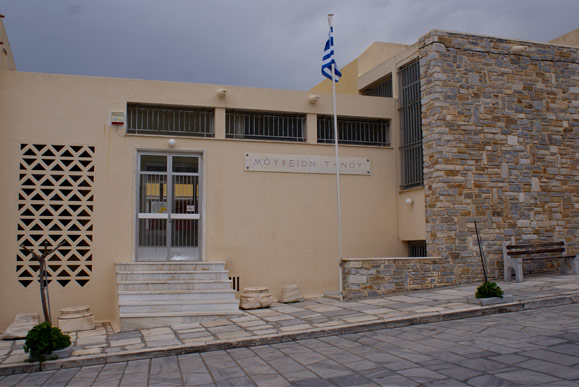
- Museum of Marble Crafts: The Museum of Marble Crafts, in Pyrgos of Tinos, is a unique example of presenting the technology of marble, a material that holds a special place in the architecture and art of Greece, from antiquity to the present day. The permanent exhibition, which describes in detail and vividly the network of tools, equipment and techniques of marble work, emphasizes pre-industrial and proto-industrial Tinos, the most important modern Greek center of marble work. At the same time, it highlights the social and economic context in which the local workshops were developed.
- Giannouli Halepa Museum: It is located in the village of Pyrgos, at the main entrance of the village, next to the Museum of Panormite Artists. The area where the Giannoulis Halepa Museum is housed was the home of the sculpture legend. Exploring the well-preserved house-museum, one gets the feeling that Giannoulis left it a while ago, even though more than 70 years have passed since he "left".

Dovecotes
The dovecote is a peculiar structure that is also found in the Cyclades, mainly in Tinos and is a special attraction. Elaborately decorated on the outside, they are built in places protected from the wind and with an open space in front for the pigeons to roost, in the ravines, on the slopes, but always close to running water and springs. It is said that over 600 pigeon lofts exist throughout Tinos.
Caves in Tinos
In the Tinian landscape beyond its wild side with the rocks carved by the winds and raging waves there are unique caves handed over to time and natural phenomena, most of which are unexplored.
- - Fly Cave or Burnt Cave
- -Dracolakas
- -Cave of Gastria
- - Cave of Panormos
- - Planet Quarry
- -The cave of mice
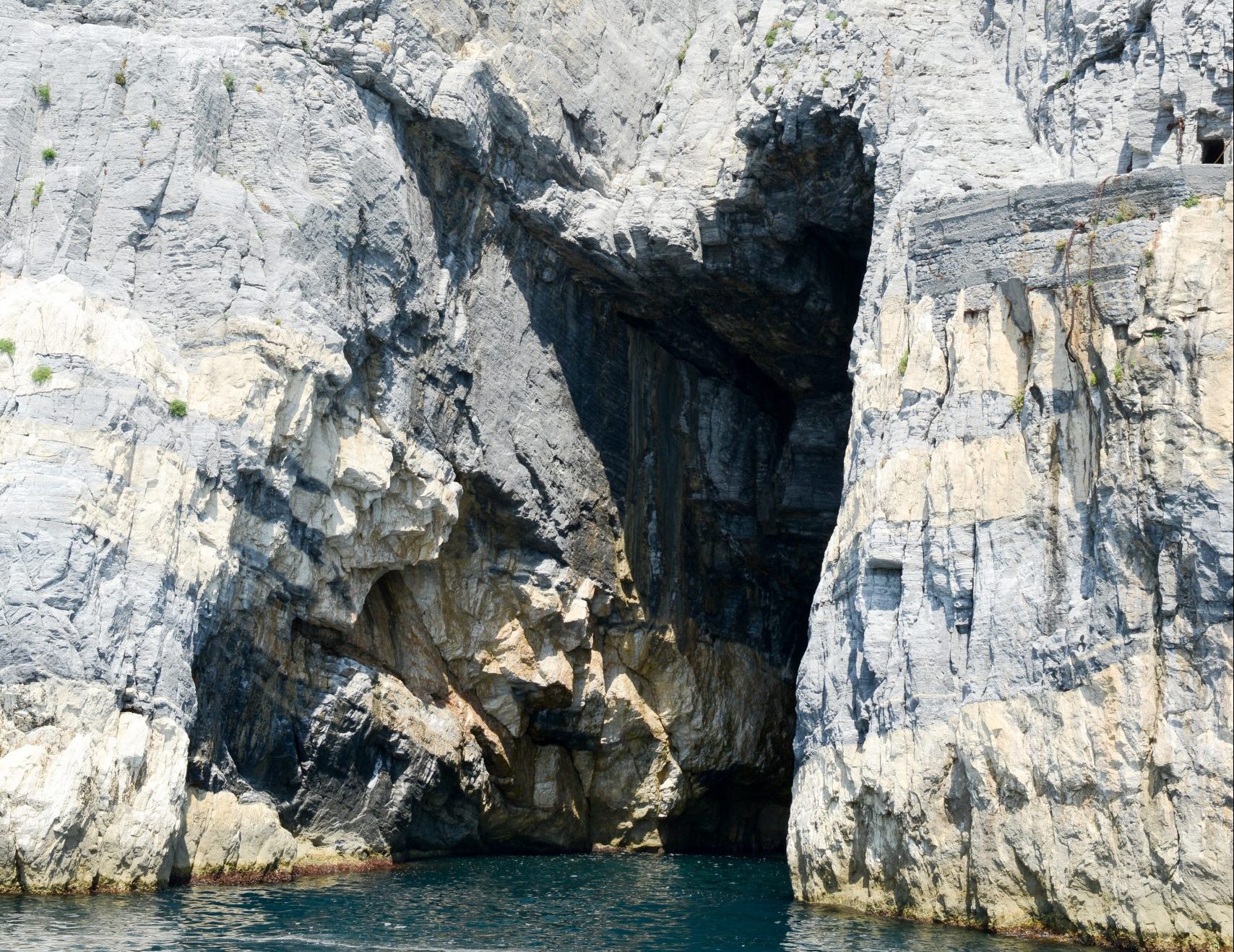

Festivals - Celebrations
The fairs in Tinos are not related to the trade fairs organized in the rest of Greece. The festival usually ends with a dance in the central square of the village. Men and women of all ages dance ball and trot to the sounds of local instruments, based on the violin. Local customs include the singer stopping the instruments and singing impromptu couplets, which usually praise the dancing skills of those in attendance. Good music, company and wine contribute to the exquisite mood for fun. Some of which are as follows:
- The Artichoke Festival: The Artichoke Festival is organized in Tinos to celebrate the local artichoke product. It includes tasty food with artichokes, music, dance and traditional games.
- Rakitzio: The Rakitzio festival is a traditional festival in Tinos celebrated in July. During the celebration, locals make and offer raki, a local grape spirit, to visitors and residents of the island.
- Festival of Evangelistria: This is the biggest festival of Tinos celebrated on March 25th, dedicated to the Virgin Mary.
- The Wine Festival: This festival takes place in Tinos during August and is an opportunity to celebrate the local wine production. Visitors can taste different varieties of wine, enjoy traditional food and enjoy local music and dance.
Traditional cuisine of Tinos
In the Tinian landscape beyond its wild side with the rocks carved by the winds and raging waves there are unique caves handed over to time and natural phenomena, most of which are unexplored.
Taste
- - Tinos artichokes
- - Louza Tinou
- - Tinos sausage
- - Malathuni
- - Thyme honey
- - Frutalia or Furtalia
- - Petroma
- - Saltsitsi
- - Stroggilo
- - Tinos cheeses
